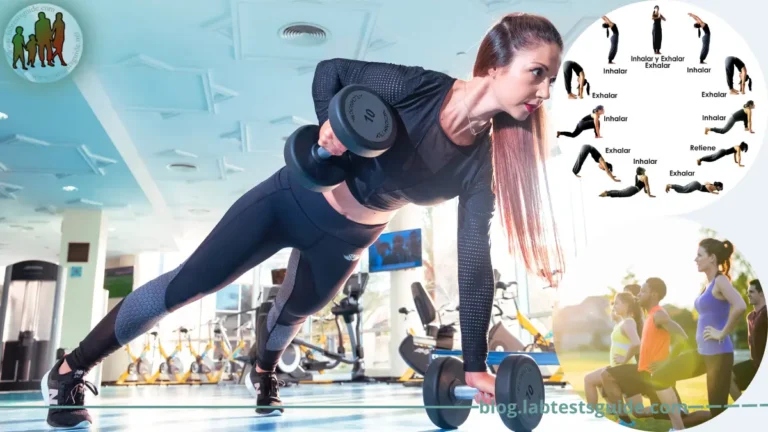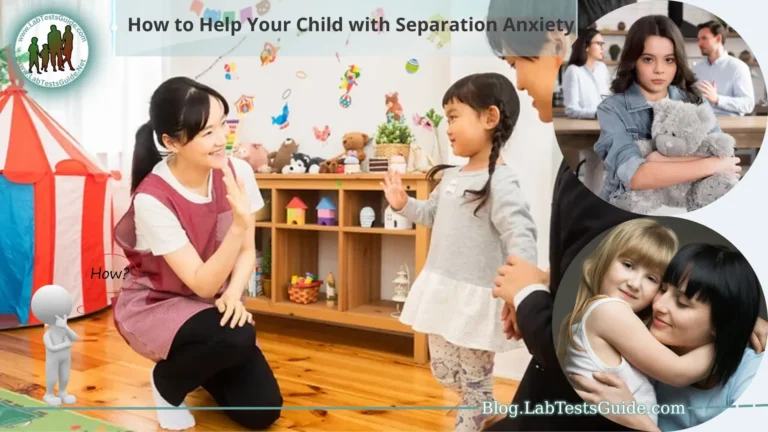Mental health is an important aspect of general well-being, and it is especially important for adolescents who are going through a period of significant growth and change. Yoga and Exercise are two forms of physical activity that have been shown to have positive effects on mental health, including reducing symptoms of anxiety and depression, improving mood, and increasing self-esteem. In this article, we’ll explore the mental health benefits of exercise and yoga for teens, as well as provide tips and resources for incorporating these practices into daily life.

Understanding Mental Health in Teens:
Mental health is an important aspect of general health and refers to a person’s emotional, psychological and social well-being. Mental health affects the way we think, feel, and behave, and can affect our ability to cope with stress, relate to others, and make decisions.
For adolescents, mental health is especially important as they are going through a period of significant growth and development. During adolescence, teens can experience a wide range of emotions and changes, including hormonal changes, academic stress, peer pressure, and relationship problems.
It is important to recognize the signs and symptoms of mental health problems in adolescents, such as anxiety, depression, substance abuse, eating disorders, and self-harm. These problems can have serious consequences if left untreated, and it is important that parents, caregivers, and educators are aware of the warning signs and seek help if necessary.
Fortunately, there are many ways to support adolescent mental health, including exercise and yoga, which have been shown to have a positive impact on mood, self-esteem, and general well-being. By incorporating these practices into daily life, teens can build resilience and develop healthy coping strategies to deal with stress and other challenges.
Benefits of Exercise for Mental Health:
Exercise has been shown to have numerous mental health benefits.
- Reduced symptoms of anxiety and depression: Regular exercise has been found to be as effective as medication in reducing symptoms of anxiety and depression. Exercise increases the production of endorphins, which are chemicals in the brain that promote feelings of happiness and well-being.
- Increase self-esteem: Exercise can help improve self-esteem and body image, which are common problems for many adolescents. By setting and achieving fitness goals, teens can build confidence and a sense of accomplishment.
- Reduce stress: Exercise can help reduce stress by lowering cortisol levels in the body. Cortisol is a hormone that is produced in response to stress, and high cortisol levels can have negative effects on mental and physical health.
- Improve sleep: Regular exercise can help improve the quality and duration of sleep, which is important for overall health and well-being. Lack of sleep can contribute to mental health problems like anxiety and depression.
- Increase social support: Exercise can provide opportunities for social interaction and support, which is important for mental health. Joining a sports team or fitness group can help teens develop friendships and a sense of community.
In general, exercise can be a powerful tool to promote mental health in adolescents. By incorporating physical activity into daily life, teens can improve their mood, reduce stress, and build resilience to face life’s challenges.
Types of Exercise:
Here are some examples:
- Aerobic exercise: Aerobic exercise, also known as cardio, includes activities that get your heart pumping and increase your breathing rate. Examples include running, bicycling, swimming, and dancing. Aerobic exercise has been shown to have many mental health benefits, including reducing symptoms of anxiety and depression.
- Strength training: Strength training involves the use of weights or resistance to build muscle and improve physical strength. Examples include lifting weights, doing push-ups and sit-ups, and using resistance bands. Strength training can improve self-esteem and body image, as well as reduce symptoms of anxiety and depression.
- Yoga: Yoga is a form of exercise that involves gentle movements and postures, as well as breathing exercises and meditation. Yoga has been shown to have many benefits for mental health, including reducing stress and anxiety, improving mood, and increasing self-awareness.
- Mind-Body Exercises: Mind-body exercises, such as tai chi and qigong, involve gentle movement and breathing exercises that promote relaxation and stress reduction. These exercises can help improve mood and reduce symptoms of anxiety and depression.
- Team Sports: Joining a sports team can provide opportunities for social interaction and support, which is important for mental health. Team sports can also help build confidence and a sense of accomplishment.
These are just a few examples of the many types of exercise that can be beneficial for adolescent mental health. Finding a form of exercise that is enjoyable and sustainable is important, as this can help ensure long-term benefits.
How to Start an Exercise Routine:
Here are some tips to help you get started:
- Start small: It’s important to start with small, achievable goals to build momentum and avoid burnout. For example, you can start with a 10-minute walk around the block or some simple yoga poses. As you build strength and stamina, you can gradually increase the intensity and duration of your workouts.
- Find something you enjoy: It’s easier to stick to an exercise routine if you enjoy the activity. Consider trying different types of exercise until you find something you like, whether it’s dancing, walking, or lifting weights.
- Make it a habit: It can help to schedule exercise into your daily routine, whether it’s before school, after dinner, or during a break between classes. This can help create a sense of routine and make exercise a constant part of your day.
- Get support: Consider finding a workout partner or joining a fitness class or sports team. Having social support can help motivate you and make exercise more enjoyable.
- Listen to your body: It’s important to listen to your body and take breaks or adjust the intensity of your workout as needed. Pushing yourself too hard can lead to injury or burnout, so it’s important to find a balance that works for you.
Remember, exercise is not only good for your physical health, but also for your mental health. By incorporating regular physical activity into your routine, you can improve your mood, reduce stress, and build resilience to face life’s challenges.
Tips for Incorporating Exercise into Daily Life:
Here are some tips for incorporating exercise into your daily life:
- Set realistic goals: Start by setting realistic goals for yourself. For example, try to exercise for 30 minutes a day, three times a week. As you get stronger and more comfortable with exercise, you can gradually increase the frequency and duration of your workouts.
- Use everyday activities as exercise: You don’t need to be a member of a gym to be physically active. Consider using everyday activities for exercise, such as taking the stairs instead of the elevator, walking or biking to school, or doing household chores like gardening or cleaning.
- Make it a social activity: Exercising with friends or family can make it more fun and enjoyable. Consider joining a sports team, taking a fitness class, or just going for a walk or jog with a friend.
- Mix it up: Doing the same exercise routine every day can be boring. Mix it up by trying different types of exercise, like yoga, weight lifting, or swimming.
- Schedule it: It can help to schedule exercise into your daily routine, for example, by setting aside time before or after school to go for a run or go to the gym.
- Use technology: There are many apps and online resources available that can help you track your progress and stay motivated. Consider using a fitness tracker or app to track your workouts and set goals for yourself.
Remember, incorporating exercise into your daily life doesn’t have to be complicated or time consuming. By finding ways to be more physically active throughout the day, you can improve your physical and mental health and create a lifelong exercise habit.
Yoga for Mental Health:
Here are some ways that yoga can benefit your mental health:
- Reduce stress: Yoga can help reduce stress by calming the mind and body. Yoga poses, breathing exercises, and meditation can help promote relaxation and reduce physical and emotional symptoms of stress.
- Improve mood: Yoga can also help improve mood and reduce symptoms of depression and anxiety. Some studies have shown that practicing yoga regularly can increase levels of serotonin, a neurotransmitter that helps regulate mood.
- Improve focus and concentration: Practicing yoga can help improve focus and concentration, which can be particularly helpful for teens who may struggle with attention and focus at school.
- Build Resilience: Yoga can also help build resilience and improve your ability to cope with stress and adversity. By practicing mindfulness and staying present in the moment, you can learn to better manage your emotions and respond to challenges in a more positive and constructive way.
If you’re new to yoga, consider starting with a beginner’s class or a simple yoga routine you can do at home. There are many resources available online, including videos and apps, that can help you get started with yoga and reap the mental health benefits of this ancient practice.
Yoga Poses for Mental Health:
Here are some yoga poses that can be helpful in improving mental health:
- Child’s Pose (Balasana): This is a relaxing pose that can help reduce stress and anxiety. To do this pose, start on your hands and knees, then lower your hips back toward your heels and stretch your arms out in front of you.
- Downward Facing Dog (Adho Mukha Svanasana): This pose can help reduce stress and anxiety, as well as improve focus and concentration. To do this pose, start on your hands and knees, then lift your hips up and back, straightening your arms and legs in an inverted V shape.
- Tree Pose (Vrksasana): This pose can help improve balance and concentration, as well as build resilience and inner strength. To do this pose, stand with your feet hip-width apart, then shift your weight onto one foot and place the sole of your other foot against your inner thigh. Bring your hands to your heart center and hold for several breaths, then switch sides.
- Warrior II (Virabhadrasana II): This pose can help build strength and confidence, as well as improve focus and concentration. To do this pose, start in a lunge position, then extend your arms out to the sides and turn your back foot to a 90-degree angle. Hold for several breaths, then switch sides.
- Corpse Pose (Savasana): This is a relaxing pose that can help reduce stress and anxiety, as well as promote deep relaxation and rest. To do this pose, lie on your back with your arms and legs relaxed, and focus on your breathing as you release tension in your body.
Remember, yoga is a personal practice and what works for one person may not work for another. It is important to listen to your body and respect your own limits, and to work with a qualified yoga instructor if you are new to yoga or have physical limitations or injuries.
Breathing Exercises for Mental Health:
Here are some breathing exercises that can help improve mental health:
- Belly Breathing: Also known as diaphragmatic breathing, this exercise involves taking a deep breath in through your nose and expanding your abdomen, then exhaling slowly through your mouth while contracting your abdomen. This technique can help calm the nervous system and reduce stress.
- Alternate Nostril Breathing: This technique involves closing one nostril and inhaling deeply through the other nostril, then switching sides and exhaling through the opposite nostril. This exercise can help balance the nervous system and reduce anxiety.
- Box Breathing: This technique involves inhaling for a count of four, holding for a count of four, exhaling for a count of four, and holding for a count of four before beginning the cycle again. This exercise can help calm the mind and reduce stress.
- 4-7-8 Breathing: This technique involves inhaling deeply through your nose for a count of four, holding your breath for a count of seven, and then exhaling slowly through your mouth for a count of eight. This exercise can help reduce anxiety and promote relaxation.
- Lion Breath: This technique involves taking a deep breath in through your nose, then forcefully exhaling through your mouth while sticking out your tongue and making a “roaring” sound. This exercise can help release tension and reduce stress.
Remember, breathing exercises can be done anywhere, anytime, and are a simple yet effective way to improve mental health and manage stress and anxiety.
Other Exercises for Mental Health:
Here are some examples:
- Aerobic exercise: Activities like running, bicycling, swimming, and dancing can help boost mood, reduce stress, and improve overall mental health. Try to get at least 30 minutes of aerobic exercise on most days of the week.
- Strength Training: Resistance training with weights or bodyweight exercises like push-ups and squats can help build muscle, increase confidence, and improve mental health. Aim for two to three strength training sessions per week.
- Mindful Walking: Mindful walking, or with intention and awareness, can help reduce stress, improve mood, and improve overall mental health. Focus on your breathing and the sensations in your body as you walk, and try to be present in the moment.
- Dancing: Dancing can be a fun and effective way to improve mental health. It can help improve mood, reduce stress, and improve self-confidence. Try taking a dance class or just dancing around your living room to your favorite music.
- Sports: Participating in team sports like basketball, soccer, or volleyball can help improve social connections, improve mood, and improve overall mental health. If team sports aren’t your thing, consider individual sports like tennis or swimming.
Remember, any type of exercise can be beneficial to mental health, so find something you enjoy and make it a regular part of your routine.
When to Seek Professional Help:
While exercise and yoga can be effective ways to improve mental health, they aren’t always enough to address more serious mental health issues. If you or a loved one are experiencing persistent symptoms of depression, anxiety, or other mental health conditions, it’s important to seek professional help.
Here are some signs that it may be time to seek professional help.
- Persistent symptoms: If you or a loved one is experiencing persistent symptoms of depression, anxiety, or other mental health conditions, it may be time to seek professional help. Symptoms can include persistent feelings of sadness, hopelessness, or anxiety, trouble sleeping or eating, and a lack of interest in activities you once enjoyed.
- Interference with daily life: If mental health symptoms are interfering with daily life, such as school, work, or relationships, it is important to seek professional help. Mental health conditions can affect all aspects of life, and seeking help can prevent symptoms from getting worse.
- Thoughts of self-harm or suicide: If you or a loved one are having thoughts of self-harm or suicide, it is important to seek professional help immediately. These are serious symptoms that require immediate attention.
- Previous mental health concerns: If you or a loved one have a history of mental health problems, it’s important to seek professional help if symptoms return or worsen.
Remember, seeking professional help for mental health problems is a sign of strength, not weakness. It is important to take care of your mental health, just as you would take care of your physical health. A mental health professional can provide the support and guidance needed to manage mental health problems and improve general well-being.
Conclusion:
Exercise and yoga can be effective ways to improve mental health in adolescents. Regular exercise has been shown to improve mood, reduce stress, and improve overall mental health. Yoga, in particular, can help reduce symptoms of anxiety and depression, improve sleep, and increase feelings of well-being.
It’s important to remember that exercise and yoga are only one part of a comprehensive approach to mental health. Other strategies, such as seeking professional help, practicing self-care, and developing healthy habits, may also be beneficial.
By incorporating exercise and yoga into daily life, teens can improve their mental health and well-being, and build resilience to stress and adversity. With the right tools and support, teens can thrive both physically and mentally and lead happy, fulfilling lives.






